When you import goods from overseas, how can you be sure your supplier is making high-quality products that match your specifications?
Quality inspections are an essential tool to verify that your manufacturer makes products that meet your requirements. They allow you to check your goods or raw materials while they are still at the factory, going through various stages of production.
Many buyers hire third-party inspectors like Insight Quality Services to check their product quality. Since we offer various types of inspections, it’s essential to understand the difference between them so you can make the appropriate choice for your situation.
Let’s talk about the four types of inspections that occur at the factory, plus one additional inspection type you’ll hopefully never require.
Table of Contents
4 Types of Inspections You Can Conduct at the Factory
Why do we classify inspections into four categories? The main reason is that these inspections happen at different stages of the manufacturing process.
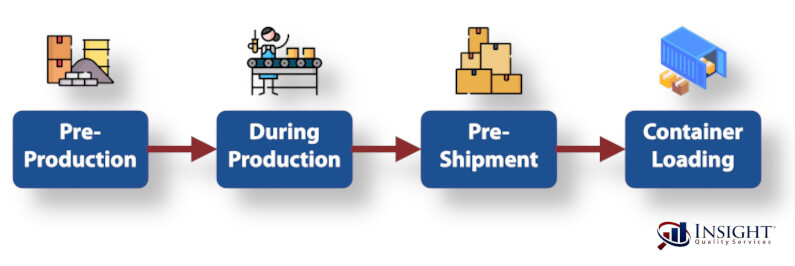 Most of the time, we conduct inspections after an entire lot of goods is completed, but sometimes, it makes more sense to inspect earlier — while they’re still in production or before production begins. Sometimes, clients even need us to supervise container loading.
Most of the time, we conduct inspections after an entire lot of goods is completed, but sometimes, it makes more sense to inspect earlier — while they’re still in production or before production begins. Sometimes, clients even need us to supervise container loading.
Watch this video to get an overview of the four inspection types, or read the following sections to learn more about them.
Video Overview
Let’s begin with the most common inspection type.
#1 Pre-Shipment Inspection
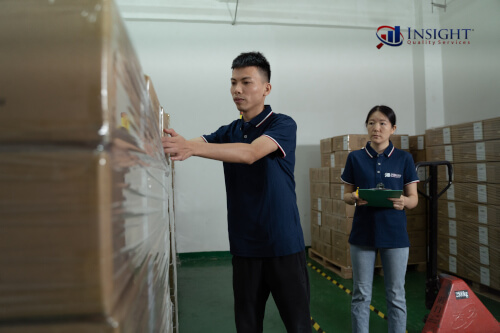
Pre-shipment inspection is the most popular type of inspection, used to verify the quality of goods before they ship. You can conduct it once the factory has produced 100% of your goods and they are at least 80% packaged.
A quality inspector picks a random sample of goods using AQL sampling, then runs through a quality checklist to ascertain dimensions, labeling, basic functionality, and workmanship, among other things. A pre-shipment inspection gives you a chance to catch defects before the factory loads the goods into a container to make the journey overseas.
#2 During Production Inspection
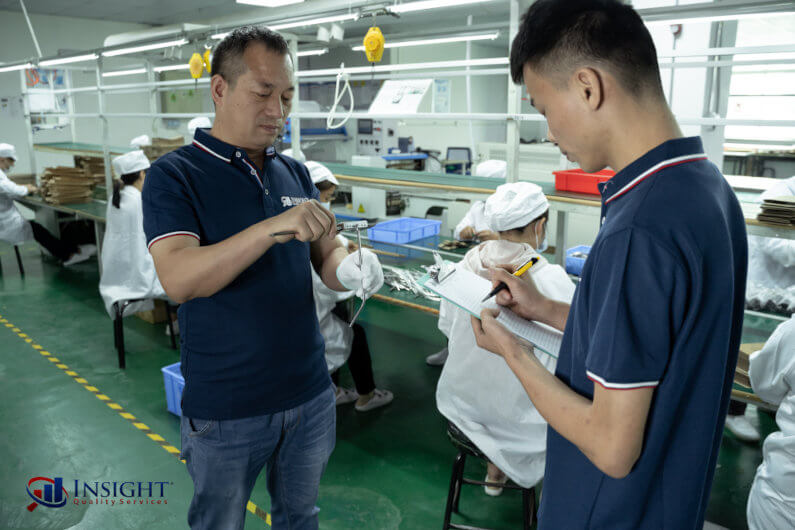
During production inspection or DUPRO refers to a quality inspection that you conduct while production is still underway. In most cases, this happens once the factory has produced between 20% to 80% of the goods.
By conducting inspections at this stage, you can catch any deviations or defects early. This way, you can take corrective action immediately, reducing costly delays. We recommend DUPRO inspections for goods with strict requirements produced in high volumes or where you must meet strict deadlines and cannot afford any delays. It is not recommended when production can be completed in one or two days.
#3 Pre-Production Inspection
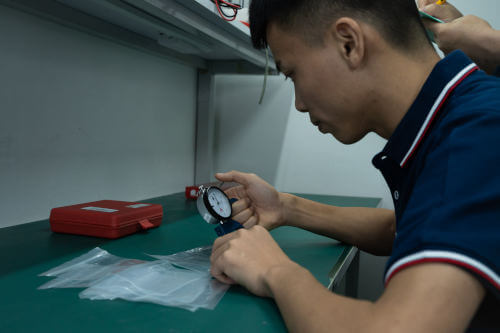
As the name suggests, importers conduct these inspections before production starts. The primary purpose of a PPI is to confirm overall factory readiness for the production process.
To this end, the third-party inspector might check the raw materials, accessories, and components the factory has prepared to ensure they are of the right quality and match specifications. They may also inspect the factory’s production line, equipment, and facilities.
Pre-production inspections may be appropriate for you if you are working with a new supplier or must meet critical delivery dates such as major holidays. You may also opt for a PPI if your current supplier has had problems maintaining raw material quality.
#4 Loading Inspection
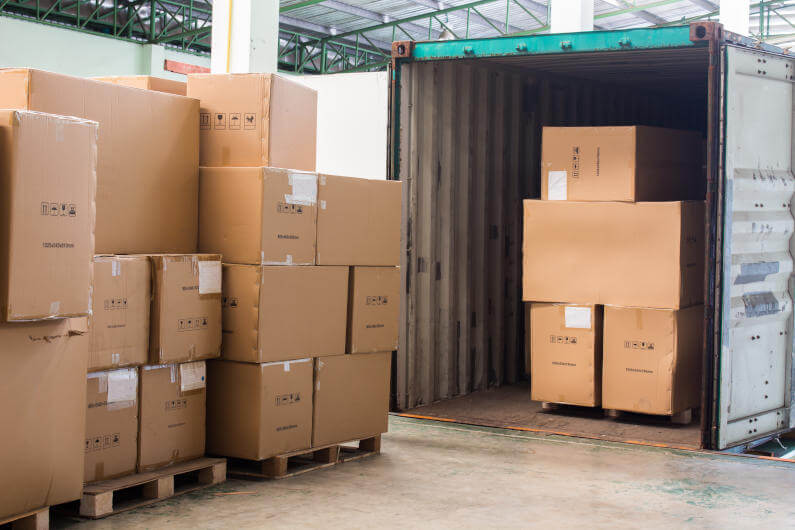
Loading inspection or loading supervision refers to checks that ensure your goods are loaded correctly and safely into the shipping container. The inspector evaluates the shipping container, packaging, and product quantities. While PPI, DUPRO, and PSI help ensure product quality, things can quickly go wrong if mishandling occurs during loading. Some buyers have loading diagrams which they need the factory to follow.
Conducting a loading inspection can help ensure that goods are handled professionally, minimizing possible damage or theft. It also reveals any potential issues that the importer can act on immediately, rather than waiting until the goods arrive. Loading inspections can give you added confidence in the shipping process, particularly if you import fragile goods.
One Additional Inspection Type
In addition to the four quality inspection types discussed above, there is one other inspection that you may require as an importer.
#5 Sort Inspection
These inspections sometimes becomes necessary when you discover the presence of defective items in your shipment. They involve going through 100% of the products to remove all the faulty units and are often conducted at a warehouse or distribution center in the country of importation.
When quality issues such as color variations, cracks, scratches, and missing parts are discovered in the shipment, these may be appropriate. The most significant benefit of a sort inspection is to ensure that defective items do not reach your customers, leading to returns, complaints, and brand damage.
Ideally, this type of inspection never becomes necessary, and conducting the other four inspection types above can help you avoid this situation.
Understand Your Inspection Options
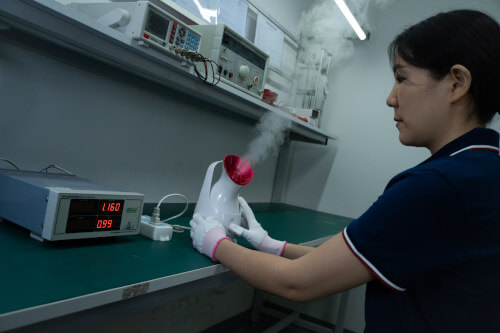
Importing sub-standard goods can result in customer complaints, returns, brand damage, and loss of investment. Fortunately, product inspections can help you mitigate these issues and ensure that you import high-quality finished goods.
Having a good understanding of the options available to you is the first step, and this article has discussed five types of product inspections you need to be aware of as an importer.
However, it is essential to note that there is no ‘one size fits all’ regarding quality inspections. The quality control method you use will depend on the product you are importing, set regulations in the industry, customer preferences, and other factors. You may also find it necessary to combine two or more inspections to achieve your quality goals.
If you would like to learn more about product inspections, download our free guide to Third-Party Quality Inspections here.
Free Download: Your Guide to Third-Party Inspections
When hiring manufacturers in developing countries, it is difficult to manage product quality.
Working with a third-party inspection company like ours helps you to ensure product safety, minimize returns, and maintain your good brand image. But there are certain things you need to understand to really leverage the service and get the best results.
Find out what they are in this white paper.
Note: This article was originally published in June 2019 and was updated in December 2024

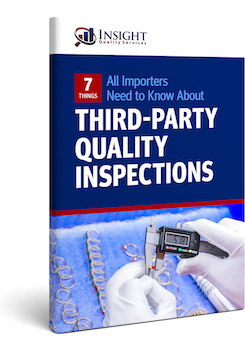



0 Comments